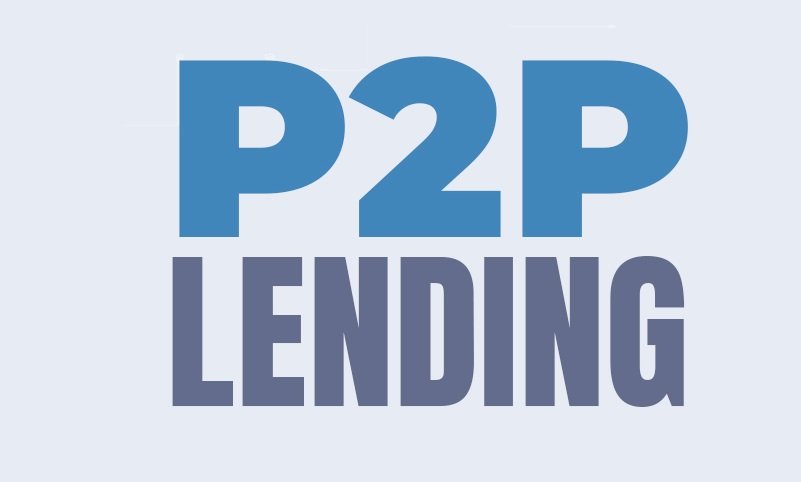How Does Peer-To-Peer (P2P) Lending Work?
Peer-to-peer (P2P) lending has emerged as a popular alternative to traditional banking, offering both borrowers and lenders an efficient and often more lucrative way to manage their finances. This article will explore the fundamentals of P2P lending, how it works, who can participate, its regulatory framework, tax implications, and the pros and cons of this innovative financial model.
Understanding Peer-to-Peer Lending
Peer-to-peer lending is a method of debt financing that enables individuals to borrow and lend money directly to each other without the involvement of traditional financial intermediaries like banks. P2P lending platforms act as the facilitators of these transactions, providing an online marketplace where borrowers can request loans and lenders can fund them.
How Does Peer-to-Peer Lending Work?
1. Registration and Verification
- Borrowers: Individuals or businesses seeking loans register on a P2P platform, providing personal, financial, and credit information.
- Lenders: Investors sign up on the same platform, often undergoing verification processes to ensure they meet the platform’s criteria.
2. Loan Listing and Funding
- Loan Application: Borrowers submit loan applications, detailing the amount they wish to borrow, the purpose of the loan, and their desired interest rate.
- Listing: The platform reviews and lists approved loans on the marketplace.
- Funding: Lenders browse the listings and choose loans to fund based on their risk appetite and return expectations. Loans can be funded by multiple lenders, each contributing a portion of the total amount.
3. Loan Agreement and Disbursement
- Agreement: Once the loan is fully funded, a legally binding loan agreement is created between the borrower and the lenders.
- Disbursement: The platform disburses the loan amount to the borrower’s account, typically deducting a service fee.
4. Repayment and Returns
- Repayment Schedule: Borrowers repay the loan in fixed installments over the agreed period, including principal and interest.
- Returns: Lenders receive regular repayments, which include a portion of the principal and interest earned, deposited into their accounts on the platform.
Who Can Lend Via a P2P Platform?
- Individual Investors: Anyone looking to earn higher returns compared to traditional savings accounts or fixed deposits.
- Institutional Investors: Financial institutions and investment funds seeking to diversify their portfolios.
- Businesses: Companies with surplus cash looking to earn better returns.
How is P2P Platform Regulated?
Regulation of P2P lending varies by country but typically involves:
- Licensing: P2P platforms must obtain licenses or registrations from financial regulatory authorities.
- Transparency Requirements: Platforms must provide clear information about fees, risks, and borrower profiles.
- Capital Requirements: Some jurisdictions require platforms to maintain a minimum level of capital to cover potential losses.
- Consumer Protection: Regulations often include provisions to protect borrowers from predatory lending practices and ensure fair treatment.
Tax Implications of P2P Lending
- Interest Income: Lenders must report interest earned from P2P lending as taxable income, which is subject to income tax.
- Capital Gains: In some jurisdictions, profits from selling loan parts or investments may be subject to capital gains tax.
- Losses: Depending on local tax laws, lenders may be able to deduct losses from defaulted loans against their taxable income.
Pros of P2P Lending
1. Higher Returns for Lenders
- Attractive Interest Rates: Lenders can often earn higher interest rates compared to traditional savings or investment options.
2. Access to Credit for Borrowers
- Alternative Financing: Borrowers with limited access to traditional bank loans can find funding through P2P platforms.
3. Diverse Investment Opportunities
- Portfolio Diversification: Lenders can diversify their investments across multiple loans, spreading risk.
4. Efficiency and Convenience
- Online Process: The entire process is conducted online, making it convenient and efficient for both borrowers and lenders.
Cons of P2P Lending
1. Credit Risk
- Default Risk: Borrowers may default on their loans, leading to potential losses for lenders.
2. Lack of Liquidity
- Investment Lock-In: Funds invested in loans are typically locked in for the duration of the loan term, limiting liquidity.
3. Regulatory Risks
- Changing Regulations: P2P lending is subject to regulatory changes that could impact operations and returns.
4. Limited Historical Data
- Relatively New Market: As a relatively new industry, P2P lending has limited historical performance data compared to traditional investments.
Final Words
Peer-to-peer lending presents a compelling alternative to traditional banking, offering significant benefits to both borrowers and lenders. By understanding how P2P lending works, its regulatory environment, and the associated tax implications, investors can make informed decisions. While the potential for higher returns is attractive, it is essential to consider the risks involved, such as credit risk and lack of liquidity. As with any investment, thorough research and due diligence are crucial to navigating the P2P lending landscape successfully.
